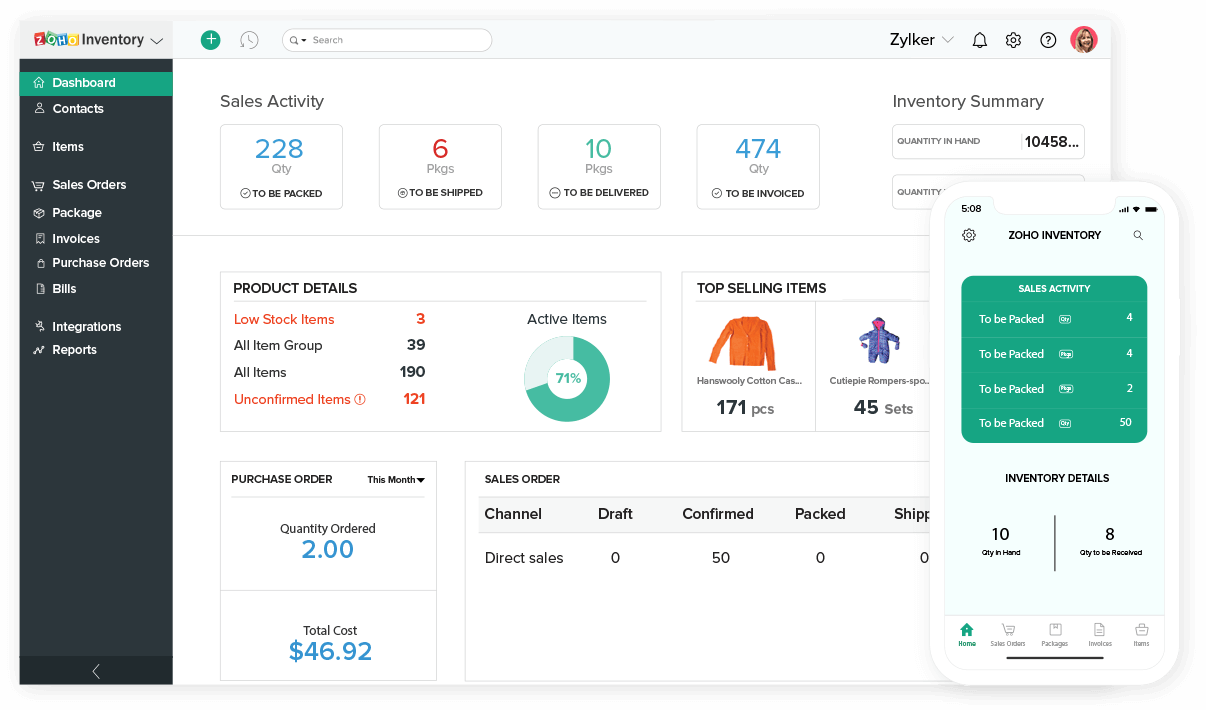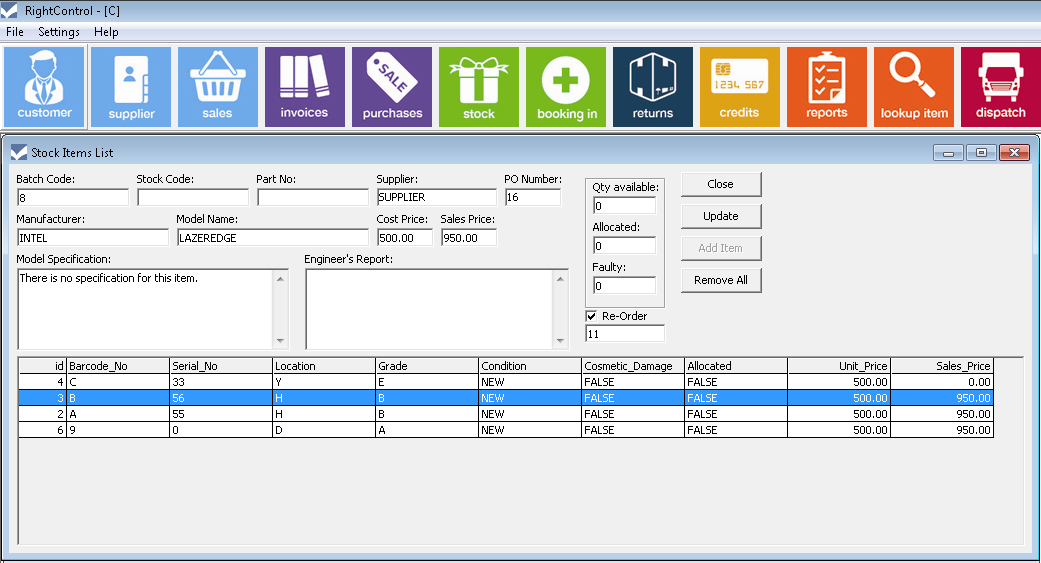Business inventory program is a comprehensive guide that provides an in-depth overview of the concept of inventory management and its significance for businesses. It explores the challenges and benefits of effective inventory management and delves into the essential features and functionalities of inventory programs.
The guide discusses the advantages of using inventory programs for businesses, highlighting how they can improve efficiency, accuracy, and cost savings. It also provides specific examples of how businesses have benefited from implementing inventory programs.
Inventory Management Overview

Inventory management plays a pivotal role in the success of businesses, as it encompasses the strategies and processes used to control the flow of goods and materials within an organization. Effective inventory management ensures that businesses have the right products, in the right quantities, at the right time, and at the right place to meet customer demand and optimize operational efficiency.
The challenges of inventory management include accurately forecasting demand, optimizing stock levels to avoid overstocking or understocking, minimizing waste and obsolescence, and managing inventory costs while maintaining customer service levels. On the other hand, the benefits of effective inventory management include reduced carrying costs, improved cash flow, increased sales and customer satisfaction, and enhanced operational efficiency.
Inventory Management Functions
Inventory management involves various functions, including:
- Demand forecasting: Predicting future demand for products based on historical data, market trends, and other factors.
- Inventory planning: Determining the optimal inventory levels to meet customer demand while minimizing costs.
- Inventory control: Tracking and managing inventory levels, including receiving, storing, and issuing goods.
- Inventory optimization: Using techniques such as safety stock, reorder points, and economic order quantity to minimize inventory costs and improve efficiency.
- Inventory valuation: Determining the value of inventory for financial reporting and other purposes.
Business Inventory Programs
Business inventory programs are software applications designed to help businesses manage their inventory, including tracking stock levels, forecasting demand, and optimizing order fulfillment. They provide real-time visibility into inventory levels, allowing businesses to make informed decisions about purchasing, production, and sales.
Key features and functionalities of inventory programs include:
- Inventory tracking: Allows businesses to track stock levels in real-time, across multiple locations and warehouses.
- Demand forecasting: Helps businesses predict future demand based on historical data, market trends, and other factors.
- Order fulfillment: Automates the process of receiving, processing, and shipping orders, reducing errors and improving efficiency.
- Reporting and analytics: Provides detailed reports and analytics on inventory levels, demand patterns, and other key metrics.
Popular Inventory Programs
Some popular inventory programs used by businesses include:
- SAP ERP
- Oracle NetSuite
- Microsoft Dynamics 365
- Infor CloudSuite Inventory
- Fishbowl Inventory
Benefits of Using Inventory Programs
Inventory programs offer numerous advantages to businesses, streamlining operations, enhancing accuracy, and driving cost savings. These programs automate inventory management tasks, providing real-time visibility and control over stock levels, enabling businesses to optimize their inventory management processes.
Improved Efficiency
Inventory programs automate inventory tracking, eliminating manual processes and reducing the risk of human error. They provide real-time updates on stock levels, enabling businesses to quickly identify and address any discrepancies or shortages. This automation streamlines inventory management, freeing up staff for more strategic tasks and improving overall efficiency.
Enhanced Accuracy
Inventory programs eliminate the potential for human error in inventory management, ensuring accuracy and reliability. They provide a centralized database for all inventory data, ensuring that all stakeholders have access to the same up-to-date information. This eliminates the risk of miscounts or discrepancies, leading to improved inventory management accuracy.
Cost Savings
Inventory programs can significantly reduce costs associated with inventory management. By automating tasks, businesses can reduce labor costs and improve operational efficiency. Additionally, inventory programs help businesses optimize stock levels, reducing the risk of overstocking or understocking. This optimization leads to reduced carrying costs, storage costs, and waste, resulting in substantial cost savings.
Specific Examples
Numerous businesses have experienced significant benefits from implementing inventory programs. For example, a retail chain implemented an inventory program and reduced its inventory carrying costs by 15%. Another manufacturing company used an inventory program to optimize its stock levels, resulting in a 10% reduction in waste and a 5% increase in production efficiency.
Features to Consider When Choosing an Inventory Program

Selecting the right inventory program is crucial for efficient inventory management. Consider these essential features to make an informed decision.
Scalability
Choose a program that can grow with your business. Consider your current and projected inventory volume and transaction rates. Ensure the program can handle increased data and operations as your business expands.
Integration Capabilities
Integrate your inventory program with other business systems, such as accounting, sales, and CRM. This streamlines data flow, reduces errors, and improves overall efficiency.
User-friendliness
The program should be easy to use for both technical and non-technical staff. Intuitive navigation, clear dashboards, and user-friendly interfaces enhance adoption and productivity.
Key Features Checklist
- Inventory tracking and reporting
- Multi-location management
- Barcode and RFID support
- Inventory forecasting and replenishment
- Purchase order management
- Reporting and analytics
Best Practices for Implementing an Inventory Program

Implementing an inventory program effectively requires careful planning and execution. Best practices include ensuring data accuracy, optimizing inventory levels, and providing adequate employee training.
Data accuracy is crucial for effective inventory management. Regular audits and reconciliation processes help ensure that physical inventory matches the records. Additionally, using barcode scanners or RFID tags can minimize errors during data entry.
Inventory Optimization
Inventory optimization involves maintaining optimal stock levels to meet demand while minimizing carrying costs. Techniques like ABC analysis and safety stock calculations help determine appropriate inventory levels for different items.
Employee Training
Proper employee training is essential for successful inventory management. Training should cover inventory procedures, data entry accuracy, and stock handling best practices. Well-trained staff contributes to efficient inventory operations and reduces errors.
Case Study
Example: Company X implemented an inventory program using RFID technology and employee training. This resulted in a 95% reduction in inventory discrepancies, improved order fulfillment accuracy, and a 15% decrease in carrying costs.
Future Trends in Inventory Management
The landscape of inventory management is rapidly evolving, driven by technological advancements and changing business dynamics. Emerging trends are redefining how businesses track, manage, and optimize their inventory, promising increased efficiency, accuracy, and cost savings.
One of the most significant trends is the rise of automation and artificial intelligence (AI). AI-powered inventory management systems can automate tasks such as demand forecasting, inventory optimization, and replenishment planning. This frees up human resources for more strategic tasks, while improving accuracy and reducing errors.
Real-Time Data Analytics
Real-time data analytics is another game-changer in inventory management. By leveraging data from sensors, RFID tags, and other sources, businesses can gain real-time visibility into their inventory levels, enabling them to make informed decisions and respond quickly to changing demand patterns.
Preparations for Businesses, Business inventory program
To prepare for and leverage these advancements, businesses need to:
- Invest in technology and infrastructure that supports automation and AI.
- Develop a data strategy that enables real-time data collection and analysis.
- Train staff on new technologies and best practices.
- Partner with vendors and service providers who offer innovative inventory management solutions.
Epilogue
In conclusion, this guide serves as a valuable resource for businesses looking to enhance their inventory management practices. By understanding the key concepts, features, and benefits of inventory programs, businesses can make informed decisions to improve their inventory management processes and gain a competitive edge.
FAQ Resource
What is the importance of inventory management for businesses?
Inventory management is crucial for businesses as it helps them maintain optimal stock levels, avoid stockouts, reduce waste, and improve cash flow.
How can inventory programs help businesses improve efficiency?
Inventory programs streamline inventory processes, automate tasks, and provide real-time data, enabling businesses to manage inventory more efficiently and reduce operational costs.
What are some of the key features to consider when choosing an inventory program?
When selecting an inventory program, businesses should consider factors such as scalability, integration capabilities, user-friendliness, reporting functionality, and customer support.